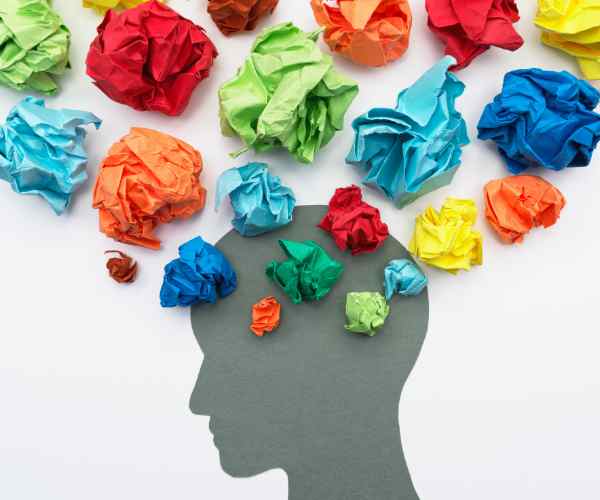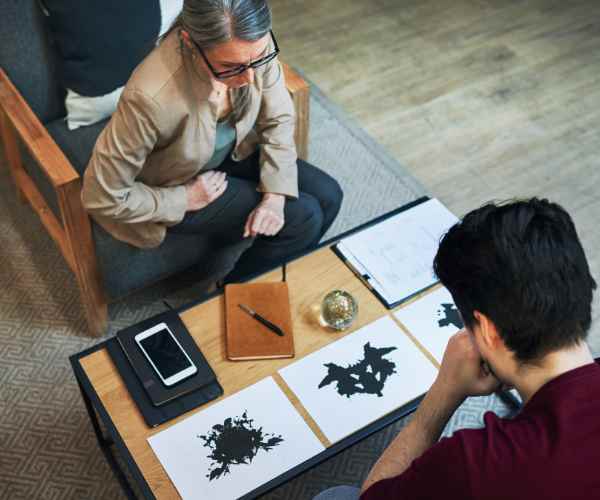Art therapy is an approach to healing and expressing emotions through art and has been recognized as effective in treating a number of mental issues. It helps people in processing emotions as well as improving their self image. Art therapy enhances emotional resilience through creative activities which help people to relieve stress and cope with difficulties in their life.
At present, artistic expression has become one of the best solutions to the modern-day mental health problems. Given the rising popularity of art therapy, many people have begun embracing it as a form of therapy that boosts emotional burdens as well as everyday life. It promotes growth within an individual and gives them a chance to delve deep into their inner self.

What is art therapy?
Art therapy is an umbrella term that refers to all kinds of art-related activities that aid an individual in comprehending their feelings, healing their emotional pain, or managing stress. To put it another way, it is an amalgamation of creating and using drawings, sculptures, and paintings with the aim of improving mental well-being. To facilitate emotional exploration during the process of engaging in such activities, clients are provided with a ‘structure’ which is therapeutic in nature.
Historical Background
Tracing the background of art therapy leads to the start of the 20th century when leaders such as Edith Kramer and Margaret Naumburg first utilized art as a manner of expressing one’s self emotionally. There was a time when art therapy was only active in the psychiatric world but has now amassed global attention and regard. The experience and research found in clinics is the reasoning behind the use of art therapy in one too many emotional problems.
Key Techniques Used in Art Therapy
- Art therapy encompasses a variety of techniques, such as:
- Drawing promotes self-expression and enables a person to represent their emotions through imagery.
- Painting is ideal for innovative individuals since it provides them with an outlet to utilize their subconscious.
- Sculpting is excellent for expressive therapy for patients suffering from communication impediments due to its hands-on engagement.
Working of Art Therapy
Art therapy functions uniquely in psychology by positing that any type of creative engagement can boost emotional intelligence and shift the working of the brain’s functions. The fields of psychology and neuroscience have corroborated with neuroscience by demonstrating that engaging the brain in art helps relieve stress and stimulates emotions.
In the field of Psychology art therapy has been on the rise as engaging in art activities helps reduce stress markers such as cortisol and promotes endorphin activity that protects and enhances the body.
As per the data reported by Journal of the American Art Therapy Association, After undergoing a series of sessions, they found art therapy to be efficient with providing relief from anxiety, and depression, there was a decrease by 60% in anxiety and a decrease by 50% in depression.
These fragments of data have been corroborated time and again by university study findings as well, art therapy has been shown to improve personal development and assist the participants to face and work through difficult emotions as well.
Evaluating case studies and real life scenarios
In the case of veterans that have reported trauma post the war, art therapy has functional themes in aiding them with trauma relief, there have been many programs such as these that aid in relieving them from trauma under the veterans admin institutes, one of the research showed that along with art therapy there was a general improvement in their mental health and upto 70 percent were able to reduce their trauma.
Children experiencing emotional difficulties, as a result of bullying, family problems or other issues seem to have also benefited from this approach. According to a case study provided by Children’s Hospital Boston, Self-Emotion management has improved for children who engaged in art therapy, as 80 percent reported better self-expression.
These life stories explain how effective art therapy is in emotional healing and encouraging exploration.
Importance Of Art Therapy
- The list of pros that come with art therapy is remarkably long.
- Mental Health Treatment: Art therapy can help soothe symptoms of anxiety, depression and stress.
- Increased Emotional Strength: Participants in the therapy are able to boost their adaptability to emotional problems and hard situations.
- Enriching Experiences: Engaging in the art instructions may aid the person in the process of self-discovery.
- Art therapy is a relatively novel way of treating trauma and stress-related conditions, and hence can be very useful in mental health care.
In whose cases is art therapy useful?
Children and adolescents
Urging kids to engage in art during therapy has shown promising results in the long run, making it easier for them to navigate through emotions.
Artistic activities will help children cope with their emotions by giving them a way to communicate in a controlled setting that will aid them in their emotional development.
During therapeutic sessions, the aim is to keep the child engaged with the therapy while they gradually learn to express themselves emotionally.
Adults
The use of art therapy in adults is seen as an innovative approach to engaging in:
regulating stress: dealing with work-related issues or adjusting to changes in life may also feel good while engaging in the art of therapy process.
recovering from trauma: An art therapist assists in healing traumatic memories by actively encouraging one towards dealing with hurt emotions.
Improving Mental Well-Being: By participating in the sessions, one can improve their mental strength and emotional equilibrium alongside other things.
Elderly
Art therapy helps the elderly with:
- Emotions: Fixating on constructing art can be a focal point of emotionally charged memories inducing therapy for older adults.
- Social Isolation: Losing oneself in creative activities may lessen loneliness and encourage social interaction.
- Absolutely Read: The art of therapy having some cognitive attributes or factors may effectively contribute to personal growth and well-being in older people.
A Guide for When You Want to Start Therapy with Art
Essential skills for an art therapist
While searching for an art therapist, the emphasis should be on those people who hold qualifications in expressive arts therapy. Such diplomas are also possessed by a competent art therapist:
Participants: Seek art therapists with ATR (Registered Art Therapist) or art based LMFT (Licensed Marriage ) qualification among other things.
Art Therapists can be found by search in directories that are provided by professional organizations like American Art Therapy Association.
It is imperative that the emotional problems or mental challenges are presented to a therapist that has previously dealt and has been successful with such issues.
Therapeutic exercises are aimed at an individual’s growth, thus a certified art therapist would ensure that you have an assisting role during the session and procedures are set separately for you.
How does an Art Therapy Session look like
So here’s what you will typically do in an art therapy session:
Making Art: You will make art through some heavy-duty self-expressive activities such as drawing, painting, or sculpting.
Talking about You: Simultaneously making art you will be talking to your therapist about your emotions, what you felt during the process, how you grew through it, and everything else that explains in which stage of your life you are right now.
Art as a Therapy: These sessions are aimed towards achieving therapy goals like stress reduction, overcoming trauma. The therapist will aid you during the painting process so you will be able to ease the worries that you have Inside you.
Home Art Therapy Guide: Tips and Best Practices
To begin with Engaging in Creative Activities: Drawing or painting will do well to unfurl the emotional canvas of oneself. The exercise is therapeutic and done on a regular basis, it helps alleviate stress and improves one’s mental balance.
Next, Create a Routine: Encourage the time allocated for creative projects to form part of the daily or weekly exercise schedule. This once again goes a long way in restoring psychological equilibrium and aiding in self-growth.
Moving on to Use Art as a Tool: Approach the various art activities more as a self-care mechanism. Rather think how art making makes one feel and use it as a way of working through oneself.
FAQs
What is the difference between art therapy and traditional art classes?
The two are intrinsically different due to their focus and objectives.
Emotional Exploration: In contrast to traditional art classes that seek to cultivate particular skills, art therapy is multi-faceted in its application as is aimed as treatment of a condition of emotional distress.
Therapeutic Experience: Personal improvement oriented rather than technique based as would be the case in art classes where the emphasis is on creating art as a connoisseur would – to appreciate beauty in form and appearance rather than for the sake of creation itself. This could be why they emphasize on healing more than creating.
Is Art Therapy Good for Trauma Recovery, and If So how good?
Yes Art Therapy is good for Trauma as it would be helpful.
According to research, art therapy has been successfully used to manage emotional pain and deal with trauma-related issues. Studies indicate it can greatly enhance trauma symptoms as well as a person’s mental health.
Thus for instance a study published by Journal of Trauma & Dissociation claims that participants who engaged in art therapy reported a 65% relief from PTSD.
Will health insurance pay for art therapy?
The coverage for art therapy however varies:
Health insurance may sometimes pay for use of expressive arts therapy sessions, while in other instances it is not permitted and may also depend on the provider and plan documents.
Contact your health insurance provider to ascertain if art therapy is part of the services included in the health insurance package you subscribed to. As a result of the inquiry, ask for a concise statement which outlines the available services and insurance coverage of the services in question.
Conclusion
Art therapy emerges as a great tool for restoring emotional appreciation and mental soundness. Once art is integrated into therapy processes a person is bound to go through great personal transformation and enhance emotional stability.
Art therapy as a form of treatment deserves further exploration as it could be beneficial in enhancing mental wellbeing and dealing with difficult emotions.
More post
- How do Painting and Photography Influence Each Other? “The Art of Blending
- How Urban Landscapes Inspire Modern Art?(Exploring Cityscapes and Skylines)
- Exploring the Evolution and Techniques of Landscape Painting
- Exploring the Rise of Digital Art Inspiration: A Journey Through Technology and Creativity
- How Do You Get Inspiration for 3D Art?


